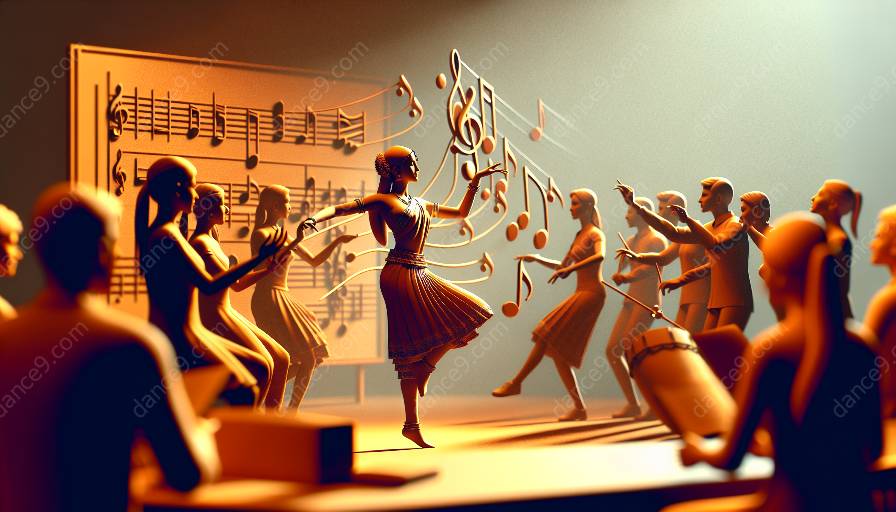Music and dance have a deep and intertwined relationship, each influencing the other in countless ways. When it comes to choreographing a dance, the use of music notation plays a significant role in shaping the movements, emotions, and structure of the performance. This article will delve into the importance of music notation for dance choreography, how it influences the relationship between music and dance, and its relevance in the study of dance.
The Connection Between Music and Dance
Before we explore the significance of music notation for dance choreography, it's essential to understand the relationship between music and dance. Both music and dance are mediums of expression and art forms that have been intertwined for centuries. The rhythm, melody, and structure of music have a profound impact on the movements, formations, and emotions conveyed in dance performances.
At its core, dance is a physical interpretation of music, and choreographers often find inspiration in the nuances of a musical piece. The intricate relationship between music and dance allows for a seamless blend of artistic expression, with the movement of the human body reflecting the rhythm and mood of the accompanying music.
The Role of Music Notation in Dance Choreography
Music notation serves as a vital tool for choreographers seeking to create synchronized and harmonious dance performances. By understanding and interpreting musical scores, choreographers can craft movements that resonate with the rhythm, tempo, and dynamics of the music. The structure of the music, including time signature, musical phrasing, and accents, provides a framework for choreographers to design movements that complement and enhance the musical composition.
Moreover, music notation offers choreographers a tangible means of communicating their vision to dancers. By utilizing musical scores, choreographers can articulate specific movements, transitions, and alignments, ensuring that dancers interpret the music with precision and coherence. This collaborative approach allows dancers to embody the essence of the music through their physical expressions, resulting in a cohesive and powerful performance.
Enhancing the Dance Experience Through Musical Interpretation
When choreographing a dance piece, the ability to interpret music notation enables choreographers to infuse deeper meaning and emotional resonance into the performance. By analyzing the intricacies of the musical composition, choreographers can align movements with the thematic elements, dynamics, and emotional nuances of the music, creating a multidimensional and immersive experience for the audience.
Furthermore, the synergy between music notation and dance choreography empowers choreographers to explore diverse styles and genres of music, expanding the artistic possibilities and enriching the creative landscape of dance. Whether drawing inspiration from classical symphonies, contemporary pop songs, or traditional cultural music, the fusion of music notation and dance choreography opens doors to innovative and captivating performances.
Music Notation and Dance Studies
Within the realm of dance studies, the significance of music notation extends beyond the creative process and artistic expression. Studying music notation equips dance students and professionals with a comprehensive understanding of musical structures, phrasing, and rhythm, fostering a deeper appreciation for the connection between music and dance.
By incorporating music theory and notation into dance curricula, aspiring dancers and choreographers develop a holistic approach to performance art, enhancing their ability to choreograph and perform with musical sensitivity and insight. This integration of music notation in dance studies cultivates a new generation of artists equipped to communicate and express themselves more profoundly through the marriage of movement and music.
The Dynamic Intersection of Music and Dance
In conclusion, music notation holds immense significance for dance choreography, acting as a bridge between the auditory and kinesthetic realms of artistic expression. Through the integration of music notation, choreographers orchestrate movements that harmonize with the musical landscape, elevating the dance experience to new heights. The relationship between music and dance continues to evolve, inspiring collaborations that push the boundaries of creative synergy and pave the way for captivating and transformative performances.

















